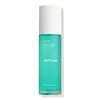What's inside
What's inside
 Key Ingredients
Key Ingredients

 Benefits
Benefits

 Concerns
Concerns

 Ingredients Side-by-side
Ingredients Side-by-side

Water
Skin ConditioningGlycerin
HumectantGlycereth-26
HumectantPropanediol
SolventSucrose
HumectantPolysorbate 20
EmulsifyingAnthemis Nobilis Flower Water
MaskingHamamelis Virginiana Water
AstringentPhenoxyethanol
PreservativeLavandula Angustifolia Oil
MaskingCaprylyl Glycol
Emollient1,2-Hexanediol
Skin ConditioningLinalool
PerfumingEthylhexylglycerin
Skin ConditioningChondrus Crispus Powder
AbrasivePropylene Glycol
HumectantPEG-32
HumectantBenzyl Alcohol
PerfumingGeraniol
PerfumingPortulaca Grandiflora Extract
Skin ConditioningHibiscus Syriacus Bark Extract
Skin ConditioningLimonene
PerfumingDehydroacetic Acid
PreservativeCI 42090
Cosmetic ColorantCI 19140
Cosmetic ColorantWater, Glycerin, Glycereth-26, Propanediol, Sucrose, Polysorbate 20, Anthemis Nobilis Flower Water, Hamamelis Virginiana Water, Phenoxyethanol, Lavandula Angustifolia Oil, Caprylyl Glycol, 1,2-Hexanediol, Linalool, Ethylhexylglycerin, Chondrus Crispus Powder, Propylene Glycol, PEG-32, Benzyl Alcohol, Geraniol, Portulaca Grandiflora Extract, Hibiscus Syriacus Bark Extract, Limonene, Dehydroacetic Acid, CI 42090, CI 19140
Water
Skin ConditioningAlcohol
AntimicrobialCitrus Aurantium Amara Flower Water
MaskingParfum
MaskingRosmarinus Officinalis Leaf Oil
MaskingGlycerin
HumectantCommiphora Myrrha Resin Extract
Skin ConditioningStyrax Tonkinensis Resin Extract
PerfumingMelissa Officinalis Leaf Oil
MaskingCitral
PerfumingLinalool
PerfumingLimonene
PerfumingGeraniol
PerfumingCitronellol
PerfumingVitis Vinifera Fruit Extract
Skin ConditioningHelianthus Annuus Seed Oil
EmollientTocopherol
AntioxidantFarnesol
PerfumingBenzyl Benzoate
AntimicrobialWater, Alcohol, Citrus Aurantium Amara Flower Water, Parfum, Rosmarinus Officinalis Leaf Oil, Glycerin, Commiphora Myrrha Resin Extract, Styrax Tonkinensis Resin Extract, Melissa Officinalis Leaf Oil, Citral, Linalool, Limonene, Geraniol, Citronellol, Vitis Vinifera Fruit Extract, Helianthus Annuus Seed Oil, Tocopherol, Farnesol, Benzyl Benzoate
 Reviews
Reviews

Ingredients Explained
These ingredients are found in both products.
Ingredients higher up in an ingredient list are typically present in a larger amount.
Geraniol is used to add fragrance/parfum to a product. It is the main component of citronellol. It is a monoterpenoid and an alcohol.
Monoterpenes are naturally found in many parts of different plants.
Geraniol can be found in many essential oils including Rose Oil and Citronella Oil. The scent of Geraniol is often described as "rose-like". Many foods also contain Geraniol for fruit flavoring.
Geraniol can irritate the skin when exposed to air. However, irritation depends on the ability of geraniol to penetrate into the skin. In general, geraniol is not able to penetrate skin easily.
Geraniol is colorless and has low water-solubility. However, it is soluble in common organic solvents.
Like citronellol, it is a natural insect repellent.
2,6-Octadien-1-ol, 3,7-dimethyl-, (2E)-
Learn more about GeraniolGlycerin is already naturally found in your skin. It helps moisturize and protect your skin.
A study from 2016 found glycerin to be more effective as a humectant than AHAs and hyaluronic acid.
As a humectant, it helps the skin stay hydrated by pulling moisture to your skin. The low molecular weight of glycerin allows it to pull moisture into the deeper layers of your skin.
Hydrated skin improves your skin barrier; Your skin barrier helps protect against irritants and bacteria.
Glycerin has also been found to have antimicrobial and antiviral properties. Due to these properties, glycerin is often used in wound and burn treatments.
In cosmetics, glycerin is usually derived from plants such as soybean or palm. However, it can also be sourced from animals, such as tallow or animal fat.
This ingredient is organic, colorless, odorless, and non-toxic.
Glycerin is the name for this ingredient in American English. British English uses Glycerol/Glycerine.
Learn more about GlycerinLimonene is a fragrance that adds scent and taste to a formulation.
It's found in the peel oil of citrus fruits and other plants such as lavender and eucalyptus. The scent of limonene is generally described as "sweet citrus".
Limonene acts as an antioxidant, meaning it helps neutralize free radicals.
When exposed to air, oxidized limonene may sensitize the skin. Because of this, limonene is often avoided by people with sensitive skin.
The term 'fragrance' is not regulated in many countries. In many cases, it is up to the brand to define this term. For instance, many brands choose to label themselves as "fragrance-free" because they are not using synthetic fragrances. However, their products may still contain ingredients such as essential oils that are considered a fragrance.
Learn more about LimoneneLinalool is a fragrance and helps add scent to products. It's derived from common plants such as cinnamon, mint, citrus, and lavender.
Like Limonene, this ingredient oxidizes when exposed to air. Oxidized linalool can cause allergies and skin sensitivity.
This ingredient has a scent that is floral, spicy tropical, and citrus-like.
Learn more about LinaloolWater. It's the most common cosmetic ingredient of all. You'll usually see it at the top of ingredient lists, meaning that it makes up the largest part of the product.
So why is it so popular? Water most often acts as a solvent - this means that it helps dissolve other ingredients into the formulation.
You'll also recognize water as that liquid we all need to stay alive. If you see this, drink a glass of water. Stay hydrated!
Learn more about Water